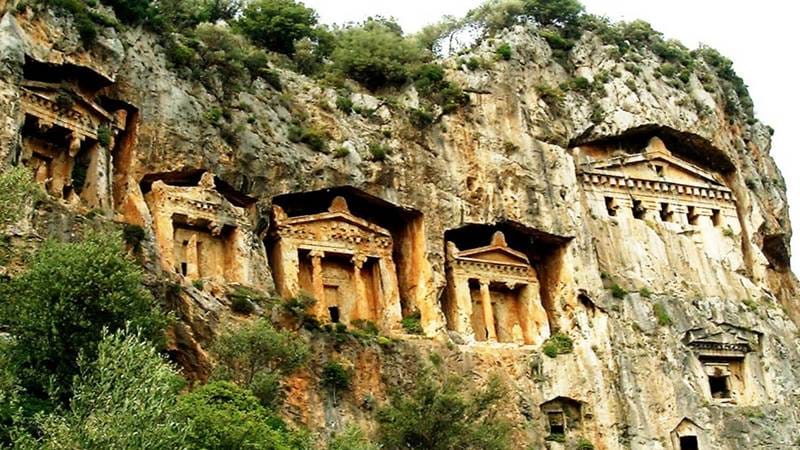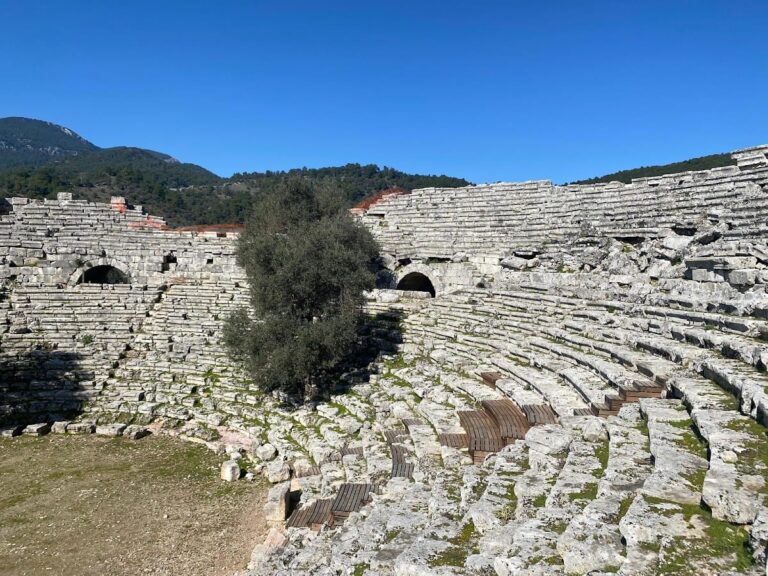Telmessos: An Ancient Lycian City in Modern Turkey
Visitor Information
Google Rating: 4.5
Popularity: Low
Google Maps: View on Google Maps
Country: Turkey
Civilization: Byzantine, Greek, Roman
Remains: City
History
The ancient city of Telmessos, established by the Lycians near the border of the historic regions of Lycia and Caria, is situated in what is now the municipality of Fethiye in modern-day Turkey. Its origins trace back to the Bronze Age, making it one of the longstanding urban centers in this part of Anatolia.
In the 13th century BC, Telmessos was known as Kuwalapašša in Hittite records, within the territory referred to as Lukka. These annals indicate that the city allied with the Hittite Empire during conflicts against the neighboring land of Iyalanda. Over time, Telmessos joined the broader cultural and political fabric of Lycia, becoming recognized by its Lycian name Telebehi.
During the 5th century BC, Telmessos was a noted member of the Delian League, the alliance led by Athens. Undergoing shifts in authority, it came under the control of local Lycian rulers before being absorbed into the Achaemenid Persian Empire. After Alexander the Great captured the city without resistance in 334 BC following his siege of nearby Halicarnassus, Telmessos flourished under his reign and that of his successors, including the Ptolemies, Seleucids, and the kingdom of Pergamon.
The city earned historical fame for its school of diviners, whose counsel attracted prominent figures throughout antiquity. Among those who sought their guidance were King Croesus of Lydia and Alexander the Great himself, highlighting Telmessos as a spiritual and intellectual center in the ancient world.
With the expansion of Roman influence, Telmessos became part of the Roman Republic and later the Roman Empire. During this time, especially by the 1st century AD, the city’s fortunes waned as trade routes shifted, leading to a smaller population and diminished commercial importance. It was renamed Makri during this Roman period and incorporated into the province of Lycia.
In the Byzantine era, Telmessos, or Makri, stood as a bishopric within the metropolitan jurisdiction of Myra. The city was renamed Anastasiopolis in the 8th century to honor Emperor Anastasios II, who undertook reconstruction efforts after Arab raids in the 7th century caused significant damage. However, historical records show that by the 9th century the city had reverted to its name Makri.
Ecclesiastical documentation highlights the presence of bishops Hilary in 370 AD and Zenodotus in 451 AD, attesting to the city’s enduring religious role. The bishopric remained active until at least the 10th century. Today, the ancient see of Telmessos endures as a titular diocese recognized by both the Catholic and Eastern Orthodox Churches.
Remains
The ancient urban layout of Telmessos has been extensively transformed, with the modern town of Fethiye built over much of the Roman-period city. The site’s archaeological remains are therefore partially concealed, further complicated by centuries of earthquakes and rebuilding efforts. Despite this, several important features survive that shed light on the city’s historical fabric.
Foremost among the surviving monuments are the rock-cut tombs etched directly into the cliffs south of modern Fethiye. These Lycian tombs stand as prominent examples of funerary architecture and include the well-known tomb of Amintas, dated by an inscription to the 330s BC. The tomb’s inscription provides valuable information linking it to a local ruler, and its impressive façade displays the refined stonework characteristic of Lycian craftsmanship.
Scattered around the vicinity are multiple Lycian sarcophagi and other funerary monuments. These have been noted since the 19th century and reflect the region’s long-standing traditions of monumental burial practices. Their preservation varies, but they collectively illustrate the extent of Lycian cultural influence over the area.
Recent archaeological efforts led by the local museum have uncovered the remains of a theater within the ancient city. Though details such as its size or architectural specifics remain limited, this discovery offers insight into the social and cultural life of Telmessos and indicates the presence of Roman-period public entertainment facilities.
The city’s harbor was a significant feature, carefully sheltered by an island that separated it from the Gulf of Telmessos. This natural protection likely contributed to the city’s maritime activities, facilitating trade and communication with neighboring regions. The configuration of the harbor influenced both economic pursuits and strategic considerations throughout Telmessos’s history.
Inscriptions associated with the site include dedications on the Amintas tomb, as well as ecclesiastical records referencing its bishops and its status within the church hierarchy as a metropolitan see. These epigraphic sources complement the architectural remains and provide a textual dimension to the understanding of Telmessos’s historical development.
Collectively, the surviving monuments of Telmessos present a layered narrative of an ancient city shaped by Lycian traditions, Greek cultural exchanges, Roman administration, and Byzantine religious significance, preserved beneath and amidst the modern urban environment.










